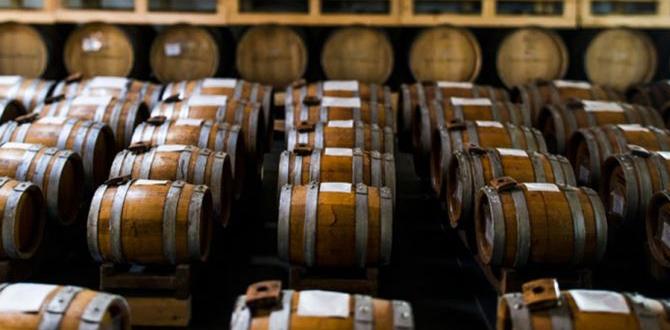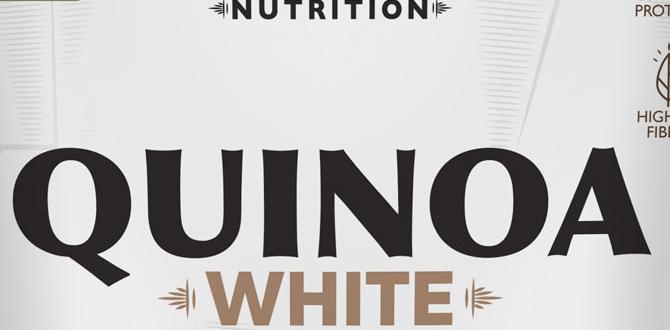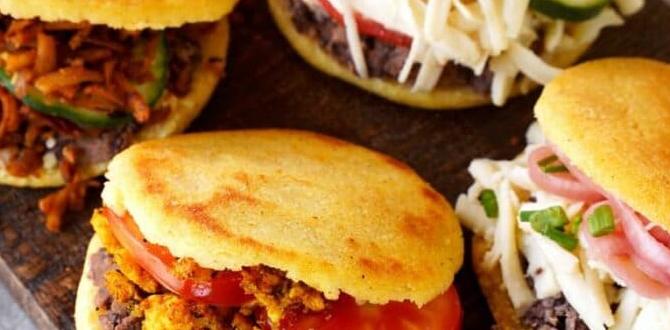Discover the Foie Gras Route in France for an unforgettable culinary adventure, exploring picturesque farms and tasting authentic, high-quality foie gras.
France is a treasure trove for food lovers, and if you’re dreaming of experiencing the very best of French gastronomy, a journey along the Foie Gras Route is a must. This isn’t just about tasting; it’s about understanding the tradition, the passion, and the incredible dedication that goes into creating this iconic delicacy. You might feel a bit overwhelmed trying to plan it all, but don’t worry! We’re going to walk through everything you need to know to make your Foie Gras Route adventure smooth, delicious, and incredibly memorable. Get ready to explore charming landscapes and savor flavors you won’t forget.
What is the Foie Gras Route?
The “Route du Foie Gras” isn’t a single, geographically defined road like a highway. Instead, it’s a concept, a collection of farms, producers, and artisanal businesses primarily located in the southwestern regions of France, particularly in areas like the Périgord, Gascony, and Alsace. These regions are the historical heartlands of foie gras production. The idea behind the “route” is to encourage agritourism, allowing visitors to connect directly with the source of their food, understand the production methods, and purchase directly from the farmers. It’s an invitation to explore the countryside, visit traditional farms (often called “fermes-auberges”), learn about the geese and ducks, and, of course, indulge in tastings and meals featuring this luxurious product.
Why Explore a Foie Gras Route?
For food enthusiasts, the Foie Gras Route offers a unique perspective unlike any other. It’s a chance to:
- Connect with Tradition: Understand the centuries-old methods and deep cultural significance of foie gras in French cuisine.
- Experience Authenticity: Taste foie gras made with care and passion on the very farms where the ducks and geese are raised.
- Support Local Producers: Your visit directly benefits small, family-run businesses and helps preserve traditional farming practices.
- Discover Beautiful Regions: The route takes you through some of France’s most picturesque and gastronomically rich countryside.
- Learn About Production: Gain insight into the welfare of the animals and the meticulous process of creating high-quality foie gras.
Where to Find the Foie Gras Route in France
While you won’t find a single signpost marking “Foie Gras Route,” the spirit of this culinary journey is most strongly felt in specific regions renowned for their production. These areas have a high concentration of farms that welcome visitors.
Southwest France: The Heart of Foie Gras
This is the undisputed epicenter of French foie gras. The fertile lands and traditional farming heritage here are perfect for raising the ducks and geese that produce this delicacy.
- Périgord (Dordogne): Famous for its truffles and walnuts, the Périgord region also boasts numerous foie gras producers. Look for farms in the areas around Sarlat-la-Canéda and Bergerac. Many offer farm tours followed by delicious meals.
- Gascony (Gascogne): This is often considered the spiritual home of foie gras. The rolling hills and rich agricultural landscape are dotted with producers. Areas like Lot-et-Garonne, Gers, and Landes are prime locations.
- Béarn & Basque Country: These regions in the Pyrénées-Atlantiques also have a strong tradition of duck and goose farming for foie gras, often incorporating local flavors and recipes.
Alsace: A Northern Tradition
While the Southwest dominates, Alsace in northeastern France also has a significant foie gras tradition, often with a slightly different culinary flair, sometimes featuring goose liver more prominently and influenced by Germanic culinary styles.
- Alsace: Look for producers in the Sundgau region and surrounding areas near Mulhouse and Colmar.
Planning Your Foie Gras Route Adventure
Embarking on this culinary exploration can be incredibly rewarding. Here’s a step-by-step guide to help you plan your trip:
Step 1: Choose Your Region(s)
Decide which part of France best suits your travel style.
- For the quintessential experience and widest variety: Focus on Southwest France (Périgord, Gascony).
- If you’re exploring the French Alps or considering a culinary tour of Alsace: Integrate visits there.
Step 2: Research Producers and Farms
This is key! Many farms have websites or are listed on regional tourism sites. Look for:
- “Fermes-Auberges”: These are farms that also offer lodging and meals, often featuring their own produce.
- Producers offering tours and tastings: Essential for the educational aspect.
- Producers with online shops: If you want to bring some home.
Some excellent resources for finding producers include:
- The official French foie gras interprofessional committee (CIWF): While not a “route” planner, they offer general information and links to regional bodies. (Unfortunately, direct links to specific government or industry bodies can change, but searching for “interprofession foie gras” or similar terms will lead you to reliable sources.)
- Regional tourism board websites: Search for “Dordogne Tourisme,” “Gers Tourisme,” “Landes Tourisme,” etc. These often have sections dedicated to local produce and farm visits.
- Specialized culinary travel blogs and guides: Many food writers have documented their foie gras experiences.
Step 3: Sample Itinerary Ideas
Here are a couple of ideas to get you started, focusing on the Southwest:
Example 1: Périgord & Dordogne Focus (3-4 Days)
Day 1: Arrival in Sarlat-la-Canéda.
- Morning: Explore the beautiful medieval town of Sarlat.
- Afternoon: Visit a local market (e.g., Wednesday or Saturday market in Sarlat) to see local produce and perhaps chat with a producer.
- Late Afternoon: Drive to a nearby ferme-auberge. Enjoy a farm tour focusing on duck raising, followed by a traditional foie gras dinner.
Day 2: Castles & Countryside.
- Morning: Visit Château de Beynac or Castelnaud-la-Chapelle.
- Lunch: Enjoy a picnic with local products, including a beautiful slice of fresh foie gras.
- Afternoon: Visit a producer near the castles, perhaps one specializing in smoked duck breast (magret de canard fumé) as well as foie gras.
Day 3: Bergerac Wines & Foie Gras Pairings.
- Morning: Explore the vineyards around Bergerac.
- Lunch: Have lunch at a winery restaurant that pairs local wines with their foie gras dishes.
- Afternoon: Visit another producer, perhaps one who offers different preparations like terrines or confit duck legs.
Example 2: Gascony & Gers Immersion (4-5 Days)
Day 1: Arrival in Auch (Capital of Gers).
- Morning: Settle in and explore the historic city of Auch, including its impressive cathedral.
- Afternoon: Visit a producer in the Gers countryside. Focus on learning about the traditional “gaver” (force-feeding) process if ethically comfortable, or seek out producers focused on more natural rearing.
- Evening: Dinner at a ferme-auberge, enjoying regional specialties like marmite de canard (duck stew).
Day 2: Village Hopping & Farm Visits.
- Day: Explore charming villages like Lectoure, Condom, or Marciac.
- Between villages: Stop at smaller, artisanal foie gras producers. Many offer impromptu tastings if you arrive during shop hours.
- Lunch: Enjoy duck confit and foie gras at a traditional Gascon restaurant.
Day 3: Artisanal Delights.
- Morning: Visit a producer known for their specific preparations – maybe they have a fantastic brandade de foie gras (a creamy foie gras spread) or a spiced version.
- Afternoon: Learn about wine pairings for foie gras, perhaps visiting a local Armagnac producer (also from the Gers region) for a tasting.
Day 4: Direct Purchase & Departure.
- Morning: Visit a final producer to buy your favorite foie gras products to take home. Look for vacuum-sealed options.
- Depart.
Step 4: Make Reservations
For farm tours, tastings, and especially for meals at fermes-auberges, booking in advance is highly recommended, particularly during peak tourist season. This ensures you secure a spot and allows the producers to prepare for your visit.
Step 5: Consider Transportation
A car is almost essential for exploring the Foie Gras Route. The farms are often located in rural areas, and public transport is limited. Renting a car will give you the freedom to stop at unexpected discoveries.
What to Expect on a Farm Visit
Visiting a foie gras farm is an educational and sensory experience. Here’s what you might encounter:
- The Animals: You’ll likely see ducks and geese in their natural environment. Understanding their diet and living conditions is part of the process.
- The Production Process: Producers are usually proud to explain how they raise their birds, from hatching to the final product. This often includes discussions about the “gaver” (traditional feeding) process, which is a point of ethical debate for some. Be prepared for an honest explanation.
- Tastings: This is where the magic happens! You’ll sample different forms of foie gras – fresh (mi-cuit), cooked (en conserve), sometimes seared (poêlé), or prepared in terrines and mousses.
- Pairings: Expect recommendations for local wines (like Sauternes, Monbazillac, or a good sweet white wine from Alsace) or other beverages that beautifully complement the richness of the foie gras.
- On-site Restaurants: Many fermes-auberges offer multi-course meals where foie gras is the star, but other duck and goose dishes are also featured.
Understanding Foie Gras Production: Ethical Considerations
It’s important to address the ethical considerations surrounding foie gras production. The traditional method involves a process called “gaver,” where ducks and geese are fed larger quantities of food, often through a tube, to engorge their livers. This practice is controversial and has led to bans or restrictions in some countries and regions.
However, in France, the practice is deeply ingrained in culinary tradition and is regulated. Many producers today also focus on alternative methods or emphasize the welfare of their birds, ensuring they have ample space and a natural diet before the final stages of feeding.
When visiting a farm, you have the opportunity to ask direct questions about their practices and animal welfare standards. Many producers are transparent and committed to responsible farming. It is up to each individual to research and decide which producers align with their personal values. Organizations like the French Agency for Food, Environmental and Occupational Health & Safety (ANSES) provide scientific information related to animal health and welfare, which can be helpful for those seeking deeper understanding.
Types of Foie Gras to Try
When you’re on the route, you’ll encounter several preparations. Understanding these will help you appreciate the diversity:
| Type | Description | Texture & Flavor | Best Enjoyed |
|---|---|---|---|
| Foie Gras Cru (Raw) | Fresh, uncooked liver. Requires careful cooking (usually searing) at home. | Delicate, buttery, melts in your mouth when cooked properly. | By experienced home cooks to be seared or pan-fried. |
| Mi-Cuit (Semi-Cooked) | Gently cooked, often in a water bath (bain-marie) to about 60-70°C. It’s the most traditional and premium preparation. | Soft, smooth, incredibly rich and creamy. Retains much of its fresh flavor. | Chilled, sliced thickly, served with toasted brioche, fig jam, or a reduction. |
| Cuit (Cooked) | Fully cooked, typically canned or jarred. Preserved longer. | Firmer texture, intense flavor, can be slightly less creamy than mi-cuit. | Chilled, sliced. Good for picnics or occasions where it needs to hold its shape. |
| Foie Gras Entier | “Whole foie gras,” meaning it’s made from a single liver, simply seasoned and cooked (usually mi-cuit). The highest quality designation. | Purest expression of foie gras flavor and texture. | Same as Mi-Cuit, a true delicacy. |
| Bloc de Foie Gras | Made from several pieces of liver, emulsified and sometimes mixed with water or other ingredients. | Smoother, more uniform texture, generally milder flavor than entier. | Cold as a spread or slices. Often a more accessible price point. |
| Mousse / Pâté de Foie Gras | Finely blended foie gras, often mixed with other meats or ingredients. | Very smooth, spreadable texture. Flavor is foie gras but often less intense. | Spread on bread or crackers. |
Tips for the Best Foie Gras Experience
To make your journey truly special, keep these tips in mind:
- Taste Comparatively: Try foie gras from different producers and in different preparations to find your favorite.
- Don’t Overcook Seared Foie Gras: If you buy raw foie gras to cook yourself, remember it cooks very quickly! Sear it for just 1-2 minutes per side for a perfect, crispy outside and melted inside.
- Invest in a Good Knife: A very sharp knife is essential for slicing chilled foie gras without tearing.
- Perfect Pairings:
- Sweet Wines: Sauternes, Monbazillac, late-harvest Riesling or Gewürztraminer.
- Earthy Flavors: Fig jam, caramelized onions, balsamic glaze, or a fruit compote.
- Bread Choice: Toasted brioche, pain d’épices (gingerbread), or a good quality sourdough are excellent.
- Take it Home: Many producers offer vacuum-sealed foie gras that travels well. It’s the perfect gourmet souvenir. Check customs regulations before you travel to your home country.
- Consider Regional Menus: When dining out in these regions, look for dishes that feature duck and goose, not just foie gras.
Beyond Foie Gras: What Else to Explore
The regions you’ll visit for the Foie Gras Route are rich in other culinary and cultural delights. Don’t limit yourself entirely to foie gras!
- Périgord: Truffles (especially in winter), walnuts, duck confit, confit goose, cèpes (porcini mushrooms), and traditional pastries.
- Gascony: Armagnac, duck confit, cassoulet, pruneaux d’Agen (Agen prunes), regional cheeses, and robust red wines.
- Alsace: Choucroute garnie (sauerkraut with various meats), tarte flambée, kouglof (a brioche-like cake), and the renowned Alsatian white wines (Riesling, Gewürztraminer, Pinot Gris).
Frequently Asked Questions About the Foie Gras Route
What is the best time of year to visit the Foie Gras Route?
Any time of year can be wonderful, but autumn (September to November) and early winter (December) are particularly special as it’s truffle season in Périgord, and producers are often busy preparing for the holidays. Spring (April to June) offers pleasant weather for exploring the countryside. Summer is peak tourist season, so booking ahead is crucial.
Is it expensive to visit the Foie Gras Route?
The cost can vary greatly. Farm visits and tastings can range from free to around €20-€30 per person, especially if they include a meal. Higher-end meals at fermes-auberges* can cost €40-€70+ per person. Accommodation and car rental are additional costs. However, buying directly from producers can be more economical than purchasing in high-end shops, and it offers unmatched quality.
Do I need to speak French to visit the Foie Gras Route?
While knowing some French is always helpful, many producers in tourist areas, especially those offering tours and tastings, will have English-speaking staff or be accustomed to addressing international visitors. Having a good translation app on your phone can also be a lifesaver for menus or during interactions.
What are the alternatives to foie gras if I’m not a fan or have dietary concerns?
Many farms and restaurants in these regions specialize in duck and goose products beyond foie gras. You’ll find delicious opções like duck confit (slow-cooked duck leg), magret de canard (duck breast), rillettes (shred



